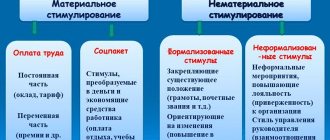Rule of three
For those who struggle with numbers or can't do nine things a day, Chris Bailey, author of My Productive Year, came up with the rule of three. It says that to achieve productivity, you only need to do the three most important things every day.
Instead of scattering your energy and attention on a couple of dozen items on the checklist, simply choose the three most important tasks for the day and focus on them. The next day, choose three more, and so on. This will help you stay focused. The same rule can be applied to setting goals for a week, month or year.
Useful literature
Finally, I would like to recommend a few books that will help you better master time management:
- Brian Tracy "Time Management"
- Gleb Arkhangelsky “Time Drive. How to have time to live and work,”
- David Allen "Getting Things Done"
- Timothy Ferriss "How to Work 4 Hours a Week"
- Staffan Nöteberg "Time management using a pomodoro"
- Chris Bailey "My Productive Year"
- Marc Forster Do It Tomorrow.
I'll wrap it up here. Read books, apply techniques and implement time management into your life - this can be very useful 
Pomodoro
alessandrozocc / Depositphotos.com
This system was invented by Francesco Cirillo to make it easier for himself to prepare for exams. It helps focus people who are easily distracted. It's also a good way to monitor how much time you spend on a particular job.
Here's how Pomodoro works: you take a timer and set it for 25 minutes. After that, you focus on work. When the 25 minutes are up, you rest for 5 minutes and then repeat. After four cycles, you will have a long break of half an hour.
Method 90/30
The 90/30 method is used by writer and blogger Tony Schwartz, co-founder of the Buffer service Leo Widrich, literary critic Benjamin Che Kai Wai and entrepreneur Thomas Oppong.
The gist of it is this: you work hard for 90 minutes, then rest for half an hour, and then repeat the cycle. In this case, you devote the first 90 minutes to the most important task that you have to do in a day, and devote the following segments to less important things.
According to research by The Enchanted World of Sleep, Yale specialist Peretz Lafi, 90 minutes is the optimal amount of time during which a person can effectively focus on one task. And half an hour is enough for complete rest, which is confirmed by the research of Sleep and Wakefulness by neurophysiologist Nathan Kleitman.
Major time wasters
To spend time more effectively, you need to figure out why it slips through your fingers?
Who and what is stealing it from us? I suggest you set aside one day for the experiment and, from early morning until late evening, record all your activities with timing. Even if this day is a little different from your usual routine, you will still be able to see your “classic time traps”. Once you've collected the information, you'll end up with a partial list of what's disrupting your business. Below are the main culprits for decreased productivity during task execution.
- Unclear goals (when you don’t know the purpose of the work being performed).
- The methodology for achieving the goal is not agreed upon (when the work is performed in ways that are not optimal for the task).
- No task priorities (when you get lost in tasks).
- Inability to say a reasonable “No” to inappropriate tasks (when you take on additional tasks without coping with the current ones).
- A large number of tasks that require high concentration (when you don’t understand what to concentrate on).
- The prospects for the tasks being performed are not visible (when you do not know the ultimate goals of completing the task).
- Lack of self-motivation (when you have no desire to engage in a task).
- Noise in the work area (when the workplace is uncomfortable).
- Phone calls/e-mails during work.
- Visitors who come while you are completing tasks, and sometimes who come with new tasks.
- Insufficient coordination with other colleagues (“fire brigades”: when everyone around is trying to put out a fire - tasks that should have been solved earlier, including with your involvement).
- Insufficient delegation of work to subordinates (when you do everything yourself).
- Insufficiently organized storage of information (when you spend extra time searching for the necessary information).
- Unexpected meetings (when they arise urgently, without the ability to properly prepare for them).
And, of course, there are three more important personal factors that depend on each of us.
- Personal disorganization and lack of self-discipline are the root of all problems.
- Smoldering conflicts between employees/departments - you need to get rid of such a legacy at the very beginning of interaction with colleagues.
- The desire to collect ALL the information before making a decision is unnecessary perfectionism; it only slows down the completion of the task.
Time blocks
Viviamo / Depositphotos.com
Task lists have one unpleasant feature: they give absolutely no idea how much time a particular task requires. “Buy bread” and “Finish the report” occupy one line on the list, but these tasks are not comparable in complexity and importance.
A calendar is much better than a to-do list: it allows you to control time visually. You see a big block and realize that the task is not easy. So try the “time block” technique: put them on your calendar and allocate time to each according to the complexity of the task. And while you are doing this or that task, do not be distracted by others.
Delegation
The Eisenhower Matrix will reveal a pool of things that are not very important (to achieve your goals), but still necessary and urgent. The best thing you can do with them is to have someone else do them. This will allow you to focus on what really brings you closer to your goal. The following tips will help you delegate as effectively as possible:
- Find the right person : whoever you delegate tasks to must have all the necessary skills to do the job;
- Provide clear instructions. Make sure that the employee knows exactly what he must do and why it is necessary. Write a step-by-step guide, give the employee the opportunity to ask questions and clarify unclear points.
- Determine the criteria for achieving results and the exact deadlines for completing the task;
6
GTD
GTD (Getting Things Done) is a productivity system created by business coach David Allen. Its main principles are as follows:
- Write down all your tasks and ideas in one place, the so-called Inbox.
- Periodically sort the contents of your Inbox, assigning priorities and deadlines to your tasks. Place notes in folders according to their contents - “Work”, “Home”, “Shopping” and so on.
- Conduct audits - throw away unnecessary notes, cross out completed tasks, move materials that have lost their relevance to the archive.
- When everything is planned, start execution. Solve tasks that can be done in a couple of minutes immediately. Others can be delegated or placed on the calendar.
You can learn all the intricacies of GTD in our guide.
Time management apps
If 30 years ago the only assistant in time management was a diary, today we have at our disposal a huge number of electronic applications that make time management easier. Let's look at the most successful of them.
Trello
A service that implements the Japanese principle of “Kanban” - a board with task cards. Suitable for both personal use and project management in teams. You can attach tags, checklists to cards, set deadlines, and change the cover.
Main advantages: visibility, intuitive interface, accessibility for all types of devices, the ability to add participants and conduct joint projects.
Todoist
An application for managing task lists with very rich functionality. With it, you can make plans for every day, sort tasks into projects and subprojects, rank them by importance, add voice reminders, and much more. You'll have to dig a little deeper into the user manual, but it's worth it! Available for Android and iOS.
Sectograph
The most original application among its kind. In it, tasks are arranged on a clock face according to the time they are due. You can set up notifications about the beginning and end of a time period allocated for a specific task, and also add a clock as a widget to your home screen. Sectograph is ideal for followers of the GTD system. Available for Android only for now.
Find even more services in our selection of time management apps.
ZTD
Leo Babauta, author of the productivity blog Zenhabits, believes that David Allen's GTD system is very complex and requires too much effort. He offers his Zen-style system - Zen to Done. To follow it, you need to develop 10 simple habits.
- Collect all information in Inbox.
- Process all records without shelving them.
- Plan your main goals for each day and your biggest tasks for the week.
- Focus on only one thing each time, without scattering your attention.
- Create simple, short to-do lists.
- Organize notes into categories based on their content, just like the original GTD.
- Regularly review your notes and get rid of unnecessary things.
- Simplify. Reduce the list of your tasks and goals, write briefly and clearly.
- To get ready for work, maintain a certain daily routine constantly.
- Do something that really interests you.
conclusions
A temporary resource is a key value for a person that cannot be purchased, accumulated, or replenished. Don't waste it, look at every new day as an opportunity. The ability to manage time does not limit freedom, but creates it.
Planning is equally necessary for businessmen, office workers, managers, executives, creative individuals, and housewives. A responsible, serious approach to the daily routine will allow you to free up enormous time resources, use them for a rich, fulfilling life, and develop personal productivity. Time management is a sure way to shorten the path from the moment an idea is conceived to its implementation.
Kanban
comzeal / Depositphotos.com
A Japanese productivity method that helps you keep track of what you're doing, what you've already done, and what you need to do in the future. Kanban visualizes the workflow in a clear way.
You take a sticky board (or sign up for a to-do manager like Trello) and draw three columns on it: “To do,” “Doing,” and “Done.” Then write your tasks on sticky notes and place them in the appropriate column depending on what you are doing and what you have already done.
Zero Inbox
Zero Inbox was invented by writer and productivity expert Merlin Mann, and it fits perfectly with GTD. Mann applied it to emails, but files, documents, notes, and other information can be processed in the same way. As the name suggests, the job of this technique is to keep your Inbox empty.
In the original GTD system, a bunch of entries constantly accumulate in the Inbox. You need to take the time to sort through them, and it’s easy to overlook something important in a crowded Inbox. Mann recommends disassembling the contents as they arrive. You open Inbox and decide what to do with each item: delete, delegate, reply, defer, or complete. Do not close it until you have performed one of the specified actions with all elements.
In addition, automatic filters in mail, smart folders and programs for sorting documents will help you save a lot of time.
What determines labor productivity in programming and what does not?
Coding War Games shared the results of its many years of research.
It turned out that productivity is not affected in any way by the amount of salary (although it would seem!) and experience if the specialist has been working for at least six months. Developers do not care about the code language (excluding asm). The number of shortcomings during tasks also does not have a direct relationship with productivity.
Our productivity is most influenced by our colleagues: “on average in the hospital,” no one manages to work much better than the entire team (statistically, the difference in productivity differs by no more than 20% from the department average). For fruitful work, the environment is important - the size of the workplace, silence, privacy, the possibility of distraction by external factors. If the environment is uncomfortable, people begin to look for where they can “hide” for normal work. You may have noticed your colleagues hiding in meeting rooms to work alone - this is a sign of an uncomfortable work environment. How effective can a work environment be, and how can this be understood? The environmental factor will answer this.
Environmental factor (C) = continuous operation time / presence time
How to organize your own fertile environment? First, pay attention to the work area. You must be free to navigate the chaos (there are such apologists) or the order of your workplace. Ideally, select no more than 7 work zones (centers of attention), in each of which organize your own thematic groups of materials/work tools (monitors, strategic analysis zone, tactical action zone, communications zone, etc.).
Secondly, think about convenient organization of documents. Since, as we have already found out, the brain cannot maintain attention on more than 7 objects, do not create too large folders. There should be 7±2 files/subfolders inside.
Thirdly, you should have enough workspace for comfortable work and, at a minimum, you should be able to simply walk or play sports locally at your workplace (push-ups, stretches, etc.).
Interesting facts about performance (based on Coding War Games)
- The best employees are 10 times more productive than the worst.
- The most productive employee is 2.5 times more productive than the average employee.
- The most productive half of employees are 2 times more productive than the other half.
Fresh or Fried
Fresh or Fried translates as “Fresh or fried.” This philosophy was created by Dominate Your Day With the “Fresh or Fried” Prioritization System by blogger Stephanie Lee. According to her, when you wake up in the morning, your brain is “fresh,” but as the day goes on, it becomes “fried.” This means that you must determine the time of your peak productivity and manage to do all the most important things for the day during this period. Here's how it works.
- At the end of the day, when you are already tired, take 15 minutes to create a to-do list for tomorrow.
- Move the most important tasks to the beginning of the day, to the Fresh section. Things that you don’t like are sent there too - those same “frogs”. They need to be done while you still have the strength.
- Less urgent, less complex, and more enjoyable tasks go to the Fried section - that is, in the afternoon, depending on your schedule. They will put less strain on your brain.
- The next morning, follow your list. Then make a new one in the evening.
Stephanie recommends FoF to people who find themselves completely exhausted every evening but not getting anything done despite working all day.
Why is time management needed?
The rhythm of life in the modern world is accelerating every year. Only those who are able to keep up with the times, without falling behind one step, will be able to achieve success and fulfillment in life.
Today it is difficult to find a person who could boast of being able to do everything. Home, study, work, sports, family - all this requires our attention, energy and time. “Oh, what a pity that there are only 24 hours in a day!” - people sigh and continue the mad race for happiness. There is no way we can increase the number of hours given to us, but we can make the most of what we have.
Imagine that you need to complete five important tasks in a day: write a work report, take your child to the clinic, wash all the windows in your apartment, take an online English lesson and work out in the gym.
Under normal circumstances, you would have difficulty meeting the allotted time frame and would probably be free somewhere closer to midnight. By mastering time management techniques, you will spend 1.5–2 times less time on all these things.
There is nothing complicated about time management; you do not need any supernatural knowledge and skills. For people working on themselves and engaged in self-development, this system is a real find. A little time to study and implement techniques, a little self-discipline - and you are the master of your time!
Iceberg method
Ramita Sethi, author of I Will Teach You to Be Rich, uses this method to store information for later. It works like this: you save all your emails, notes, articles, lists in one place - for example, in a note-taking service like Evernote or Notion, or as documents. Then organize these materials using tags, folders and categories - as you see fit.
Every 4-6 weeks, review this information and think about whether it can be applied in practice. If something is useless, throw it away or archive it. This allows you to create your own knowledge base.
Automate repetitive tasks
Modern technology has finally reached the point where we can automate many routine activities. And this doesn't mean you have to buy a robot housekeeper. First of all, this applies to working on a computer and on the Internet.
Here are some things that can be entrusted to modern technology:
- Create letter and email newsletter templates;
- Set reminders in Google Calendar so you don't have to constantly look at your to-do list;
- Use cross-posting services to manage your accounts on various social networks;
- Use spreadsheet templates to create weekly/monthly reports;
- Set up automatic bill payments using mobile banking services;
- Use chatbots to communicate with potential clients.
You can also turn to programmers to create automated solutions for more specific problems.
7
Autofocus
Autofocus was invented by productivity expert Mark Forster, The Autofocus Time Management System. This planning system is suitable for creative people who find it difficult to follow GTD.
Write down all your affairs in a notebook without any order. Then go through the list, pick the ones that need to be done ASAP, and deal with them. When urgent tasks are completed, move on to those that you prefer now. If you didn’t finish something, move it to the end of the list, and return to it later. And repeat these steps day after day.
Superman's short flight
Consider the circumstances in which we usually regret our own ineffectiveness.
When there are several burning priority tasks, the mail is overflowing with new messages, the smartphone is bursting with calls, and the messenger is full of unread messages. In such a situation, you want to speed up and work faster, but your brain can barely think, trying to concentrate on the most important things. This occurs when there is too much “input”, which leads to oversaturation of our brain. Therefore, it seems that the need to respond to all the “inputs” is driving us crazy. Let's not forget that in addition to the chaos around us, our brain itself generates chaos in the form of proactive and reactive thoughts.
Chaos is any input that requires our reaction
Meet Mr. Brain, and he hasn't changed at all in the last 600 years, as proven by our favorite British scientists.
The left hemisphere is responsible for logic, the right hemisphere for feelings, the frontal lobes for working memory (planning, decision-making, prioritizing), the occipital part for visual perception. We can only focus on 7 (±2) factors that require our attention and increased control. Anything that goes beyond this amount is perceived by a person as a threat, the brain gives an alarm signal, blocking the thinking of the frontal lobes and injecting adrenaline to speed up. This mechanism helped the caveman survive when he had to act quickly when meeting a saber-toothed tiger. Due to the adrenaline rush, our ancestor saved himself by running away, or acted decisively, attacking the predator. The brain has not changed; it still reacts to danger. Now this brain reaction is disorganizing and tiring. When working on a project, we sometimes try to cover all the inputs, but physically cannot comprehend them, as a result - at the end of the working day we continue to feel anxious, and even at home we experience irritation at any new inputs.
The feeling of one’s own inefficiency pushes one to overwork, which only worsens the situation. We sit down to work again and again, trying to make up for what we think has been lost. This works fine at sprint distances (overwork from time to time) and has a detrimental effect on marathons, when overwork is constant. Once we find ourselves in such a situation, we are often unable to get out of it. Workaholism appears.
Workaholism is a disease similar to a runny nose that occurs in everyone from time to time.
I have seen more than once employees refuse to leave the office after the end of the working day because there was still too much work to do.
We worked 12 hours a day, although the last hours were ineffective. Look at yourself from the outside, fellow workaholics! Look at your day, take a retrospective of it and your productivity. Everything lies on the surface: hyper-responsibility leads to workaholism as often as adrenaline addiction leads to the generation of problems. A person subconsciously creates problems for himself, and then valiantly copes with them - on a new portion of adrenaline. How to recognize workaholism? Yes, it’s very simple: workaholics are in no hurry to compensate for their overtime hours, they work for wear and tear, without time to recover and unintentionally, reducing the quality of their work, and then their productivity.
“Make your work filled with life, not your life filled with work.”
Stephen Covey
Sitting on a project from dawn to dusk is not the best way to show loyalty to the company.
Working overtime reduces quality and is costly for everyone. The company pays monetary compensation for processing, and subsequently for lost quality. An interesting fact: many people who later became famous did not spend much time on their life's work.
See how the day went for Hugo, Tchaikovsky and Mozart.
Green sectors are time devoted to the profession.
4D method
4D was created by Edward Ray, a motivational writer and consultant. The method is designed to help people who, when they see their list of tasks, are horrified and do not know how to approach all the accumulated items.
Ray claims that you only need to remember four D words, and then you will not give up when faced with mountains of things to do. Here they are:
- Do (do) - If you are assigned a task, it is best to complete it now and immediately cross it off the list.
- Delegate - when you cannot or do not have time to complete something, but you have a relatively free assistant, delegate the task to him.
- Delete - Some things aren't that important. Give them up by permanently removing them from your task list. If they try to impose unnecessary responsibilities on you, learn to politely say “no.”
- Delay - when a task is too large or does not require immediate execution, it can be postponed. But you must definitely set clear deadlines for her, otherwise she will remain a dead weight.
Select a task, perform one 4D action on it, and then move on to the next one.
The main principles of effective time management
Time management rests on three pillars: goal setting, prioritization and planning. Let's look at how each component helps manage our time.
Goal setting
Properly set goals can save you a lot of time at the very beginning of your journey. Deal with them, otherwise you will constantly mark time.
You must have global goals that you want to achieve and intermediate tasks to achieve them.
For example, you decided to start studying English and in a year get from the Elementary level to Intermediate. You will need to break this goal down into smaller tasks that will be easier and more comfortable for you to interact with. Namely: learn 10 English tenses, gain 2,500 words of vocabulary, learn to express yourself correctly and understand other people's speech.
To set such tasks in time management, the SMART principle is used.
Based on this principle, each task must be checked for compliance with five criteria:
- Specificity. It should not contain general vague formulations like “many”, “better”, “more”. Everything that can be expressed in a numerical equivalent must be expressed in it. For example, “learn 500 new words” instead of “increase your vocabulary.”
- Measurable. You must have clear criteria by which you will know that you have completed the task. Numbers and other objective indicators will again come to your aid.
- Attainable. The task must be realistic. An example of an unrealistic goal is to lose 30 kg in a week.
- Adequacy of the set goal (Relevant). You need to make sure that the task really brings you closer to achieving the global goal. For example, the task “take advanced training courses” corresponds to the goal “start earning 30% more,” but the task “start working out at the gym” does not or is very indirect.
- Time-bound. You must define a clear time frame for completing each task. Otherwise, they may remain unrealized forever.
Prioritization
Now that we have decided on specific goals, we need to learn how to rank them by importance. There can be a lot of goals: some are more important, others are less important, and others are completely insignificant. If you do them chaotically, you may simply not have enough time for something important.
The simplest method for prioritizing each day is called the ABC method. Its essence is that you make a daily list of tasks in descending order of their importance - from the most important to the most minor. And try to do it in the same order. This way you will definitely not miss anything important.
The first task on the list is usually the most time-consuming. No matter how strong the temptation to put it off until later, you cannot do this. You may simply not have enough strength for it after completing all other tasks.
If this task remains undone, the overall outcome of the day will be unsatisfactory, even when everything else is done. But if you do it first, you will immediately feel free and energized to do smaller things.
This rule was formulated by Brian Tracy, the author of best-selling books on the psychology of success. It's called "Eat a frog for breakfast." “Frog” in this case is the most time-consuming and difficult task to date.
The ABCD method is not suitable for all cases. Imagine that a pipe has burst in your home and you urgently need to fix the problem. Although this matter is not that important from the point of view of your global goals, it will not be possible to postpone it until later.
Here the Eisenhower matrix, named after the US President, can come to your aid. With its help, tasks are ranked not only by importance, but also by urgency. As a result, we get 4 categories of current tasks:
- Important and urgent: things that need to be done first. These include urgent projects at work, exams, planned and emergency treatment.
- Unimportant and urgent: a category of tasks that do not bring you any closer to your goal, but must be completed on time. Our example with a pipe comes from here. It is best to delegate such matters whenever possible.
- Important and non-urgent: things to do to improve your future. This can include learning something new, self-development, planning.
- Unimportant and non-urgent: idle communication with friends, surfing the Internet, computer games. You shouldn’t completely erase this category from your life, just don’t think about it until all the things in the first three categories are done.
Planning
We sorted out the goals and priorities. Now it won’t be difficult for us to learn how to plan effectively. To live a productive life, you will need both long-term plans and daily plans. Let's deal with the long-term ones first.
We have already eaten “frogs” today, it’s time for “elephants”. An “elephant” in time management is a large task that cannot be completed at once. Long-term plans are formed from them.
For example, make repairs for the New Year, lose weight by summer, save up for a new car.
What to do with them? Obviously, you need to “eat the elephant” not as a whole, but by dividing it into parts. Every day, a small piece - and soon there will not be a wet spot left of it.
Let's look at an example that is already familiar to us. Remember when we divided our goal of “reaching Intermediate English in a year” into several goals, one of which was “increasing vocabulary to 2,500 words”? Let's divide it into small pieces so that it doesn't seem so scary to us.
Our current level is Elementary, which is about 1,000 words of vocabulary. This means that we have to learn about 1,500 words (2,500 minus 1,000). We plan to study every day. We divide the number of words by the number of days in a year - it turns out that we need to learn about 4 words per day to cope with the task. Now we can safely fit this item into our daily schedule.
With short-term plans, things are much simpler. Remember when we looked at the Eisenhower Matrix? Stephen Covey, author of the book “The 7 Habits of Highly Effective People,” recommends writing it before the start of each week. In his opinion, 7 days is the ideal period of time for short-term planning. Distribute all tasks by day of the week in the following order:
- important and urgent;
- unimportant and urgent;
- important and non-urgent;
- unimportant and non-urgent (if there is time for them).
When choosing a time for each task, use the “eating frogs” method we already know.
Timing
Typically, people who are trying to be productive carefully track the time they spend on important things and completely forget to take into account the periods in which they do nonsense. This problem is solved by the “Timekeeping” technique, which was invented by time management expert Gleb Arkhangelsky. It allows you to understand where your time is spent, teaches you to be more attentive to what you are doing and less distracted.
Take a notebook and write down all your actions and how long you did them, accurate to 5-10 minutes. Record work moments, negotiations, meetings, and even time spent on YouTube and in games. Give it a couple of weeks. Then you leaf through the notebook, recognize your “chronophages” by sight and draw conclusions. Maybe you need to watch funny videos less, or go out for coffee less often, or your enemy is phone calls.
Common myths about time management
In our country, time management, like everything new, is still treated with caution. On the one hand, people are put off by the strange overseas name, and on the other hand, by the myths and stereotypes hovering around it. I will try to dispel the most common of them and convince you that this phenomenon has only advantages.
Myth No. 1. It’s all nonsense—it’s impossible to manage time.
Time is an objective quantity, so a person really cannot influence it. But when we talk about time management, we mean something completely different. It would be more correct to say “manage yourself.”
Time management will not turn you into a time charmer, it will just teach you how to manage to do more than you are used to. His techniques are mostly simple and accessible to everyone. Therefore, you should not be afraid of loud and implausible formulations; behind them lies a very harmless content.
Myth #2: I will have to work harder and harder.
Time management methods are aimed not at increasing the amount of work, but at increasing the effectiveness of activities. This is achieved through proper planning, prioritization and elimination of distractions, the so-called “time wasters”.
You don't have to exhaust yourself with work and give up personal time. Quite the contrary. Thanks to time management, you will have extra hours that you can use as you wish.
Myth No. 3. Time management will make me a soulless machine and deprive my life of spontaneity.
Let's imagine two people - let's call them Vasya and Petya. Vasya lives in constant chaos, does not have time to do anything and is always in a hurry to get somewhere. Because of this, he does most of the things unconsciously, as if “automatically.” He has no time to be distracted by all sorts of little things like contemplating the sunset or an intimate conversation with his son, but he, without knowing it, spends more than an hour a day on social networks and playing games on the phone.
Petya is a completely different matter. He is used to planning his affairs and strictly adhering to the plan. He has enough self-discipline not to be distracted while working by something unnecessary and useless. Therefore, he is never in a hurry and lives every second of his life consciously. He always finds time for his family, because it is one of the main priorities of his life.
Whose life is more like the life of a soulless machine? I think the answer is obvious. What turns us into robots is not planning and following a schedule, but a lack of awareness and contact with life.
Tim Ferriss Method
Timothy Ferriss is a productivity guru who came up with his own method of organizing work, based on two rules. The first is the 80/20 rule, or the Pareto principle, according to which 80% of our tasks can be done in 20% of the time. The remaining 20% will take 80% of the time. The second is Parkinson’s law: work fills all the time allotted to it.
According to Ferriss, the implication of this is that to get things done, you don't have to work harder - you need to focus better. Even if you work with full dedication only 20% of your working time, you will be able to redo all the really important things. And the remaining 80% can be devoted to simple routine - this way you will focus on priority tasks and avoid overwork.
Paradoxes of planning
What does our workflow typically look like? We are busy with a specific task. Meanwhile, the number of inputs is growing, and we begin to get nervous, going beyond the 7+2 areas of attention that are comfortable for the brain and losing control of what is happening. The brain, afraid of not being on time, is forced to speed us up. Working at extreme speeds reduces our concentration and the quality of our decisions. There are more problems - we get even more nervous. The circle closes.
It is impossible to do absolutely everything, since the number of new inputs (new circumstances and tasks arising in connection with them) will only grow.
Therefore, in no case should you instill in your subordinates the desire for ideals. The desire to redo everything and solve all problems harms the overall process. It is critically IMPORTANT to set priorities and deal only with priority matters at a given time. Below I will provide basic principles that will help adjust the standard approach described above.
- If we are late, we begin to lose control, we immediately need to BRAKE! Stop, check your priorities, plan what is most critical right now.
- Understand that you can only do one thing well per unit of time.
- No matter how hard you try to work much faster than the average specialist, it will not work (unless, of course, you are a guru).
- Never do today what you can do tomorrow WITHOUT PROBLEMS. About











